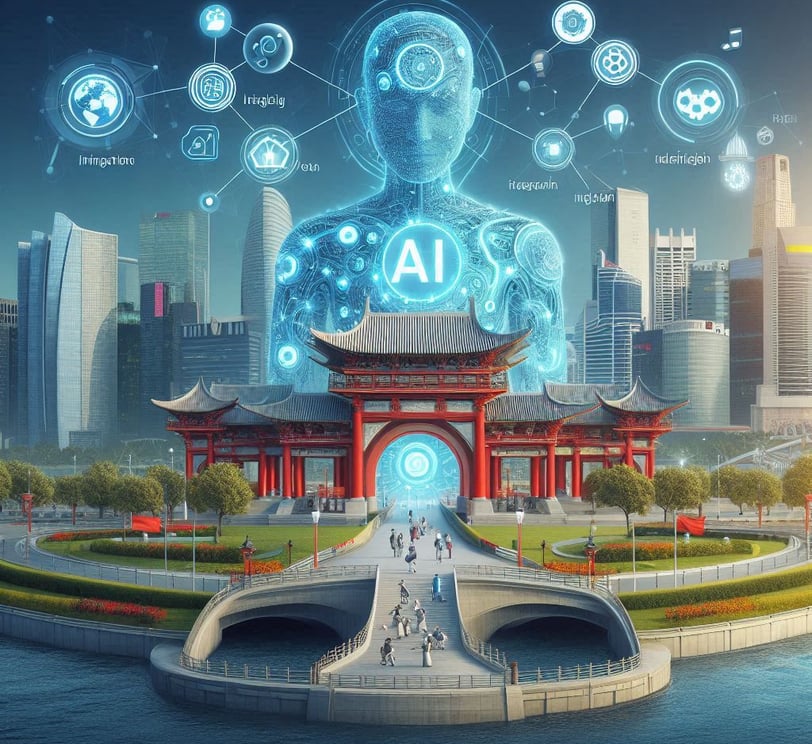Knowledge is the fuel that powers the train of progress.
Integrating AI Technologies in Educational Institutions
Empower students with valuable AI skills and exposure to cutting-edge technologies by setting up an AI lab on campus. With 7 years of AI ML delivery experience and 23 years of industry exposure, we provide professional guidance for schools, colleges, and universities.
Srinivasan Ramanujam
5/8/20243 min read
Integrating AI Technologies in Educational Institutions: A Pathway to the Future
In the rapidly evolving landscape of education, Artificial Intelligence (AI) is no longer just a buzzword—it's a transformative force that is reshaping how students learn and how educators teach. At Ramanujam AI Lab, we believe that integrating AI technologies into educational institutions is not just an option but a necessity for preparing students for the future. In this article, we explore the profound impact of AI in education, the benefits of its integration, and the steps institutions can take to embrace this technological revolution.
The Role of AI in Education
Artificial Intelligence is fundamentally changing the way we approach education. By harnessing the power of AI, educational institutions can enhance learning experiences, personalize education, and equip students with the skills needed to thrive in a technology-driven world. AI technologies have the potential to:
Personalize Learning: AI can analyze vast amounts of data to understand each student’s learning style, strengths, and areas for improvement. This allows for the creation of personalized learning pathways that cater to individual needs, ensuring that every student can learn at their own pace.
Enhance Teaching Methods: AI tools can assist educators by automating routine tasks such as grading and attendance tracking, freeing up time for teachers to focus on more meaningful interactions with students. Additionally, AI-driven analytics provide insights into student performance, helping teachers identify and address learning gaps more effectively.
Improve Accessibility: AI-powered tools can make education more accessible to students with disabilities. For example, AI can convert text to speech for visually impaired students or provide real-time captions for those with hearing impairments, ensuring that all students have equal opportunities to learn.
Foster Critical Thinking and Innovation: By introducing AI into the curriculum, students are exposed to cutting-edge technologies that encourage them to think critically, solve complex problems, and innovate. This prepares them for careers in industries where AI will play a crucial role.
Benefits of Integrating AI in Educational Institutions
The integration of AI technologies offers numerous benefits for educational institutions, including:
Enhanced Student Engagement: AI-driven interactive learning tools, such as virtual tutors and educational games, make learning more engaging and enjoyable. This increased engagement leads to better retention of knowledge and a deeper understanding of complex concepts.
DataDriven Decision Making: AI provides educators and administrators with valuable insights into student performance, attendance, and behavior. This data can be used to make informed decisions that improve educational outcomes and optimize resource allocation.
Efficient Resource Management: AI can help institutions manage resources more efficiently by automating administrative tasks, optimizing class schedules, and even predicting future trends in student enrollment and performance.
Preparing Students for the Future: As AI continues to permeate various industries, students with a strong foundation in AI and related technologies will have a competitive edge in the job market. Integrating AI into the curriculum ensures that students are well-prepared for the demands of the future workforce.
Steps to Integrate AI in Educational Institutions
For educational institutions looking to integrate AI technologies, the process may seem daunting, but it is entirely achievable with the right approach. Here are some steps to guide the integration:
1. Assess the Needs of Your Institution: Begin by evaluating the current state of your institution’s technology infrastructure and identifying areas where AI can have the most impact. This could include personalized learning, administrative efficiency, or enhanced accessibility.
2. Develop a Strategic Plan: Create a comprehensive plan that outlines the goals of AI integration, the resources required, and the timeline for implementation. This plan should also include provisions for teacher training and ongoing support.
3. Invest in AI Infrastructure: Set up the necessary AI infrastructure, including hardware, software, and connectivity. Partnering with experts, like those at Ramanujam AI Lab, can ensure that your institution has access to state-of-the-art AI technologies tailored to your specific needs.
4. Train Educators and Staff: Ensure that educators and staff are equipped with the knowledge and skills needed to effectively utilize AI tools. This can be achieved through professional development programs, workshops, and continuous learning opportunities.
5. Pilot AI Programs: Start by piloting AI programs in a few classes or departments to test their effectiveness. Gather feedback from students and teachers to refine the implementation before scaling up to the entire institution.
6. Monitor and Evaluate Progress: Regularly monitor the impact of AI integration on student outcomes, teacher satisfaction, and overall institutional performance. Use this data to make adjustments and improvements as needed.
Conclusion
Integrating AI technologies into educational institutions is a critical step toward creating a future-ready learning environment. At Ramanujam AI Lab, we are dedicated to helping schools and colleges navigate this transformation with tailored AI solutions that enhance education at every level. By embracing AI, educational institutions can not only improve the learning experience but also empower students with the skills and knowledge they need to excel in an increasingly AI-driven world.
The future of education is here, and it’s powered by AI. Let’s work together to unlock its full potential for the next generation of learners.






